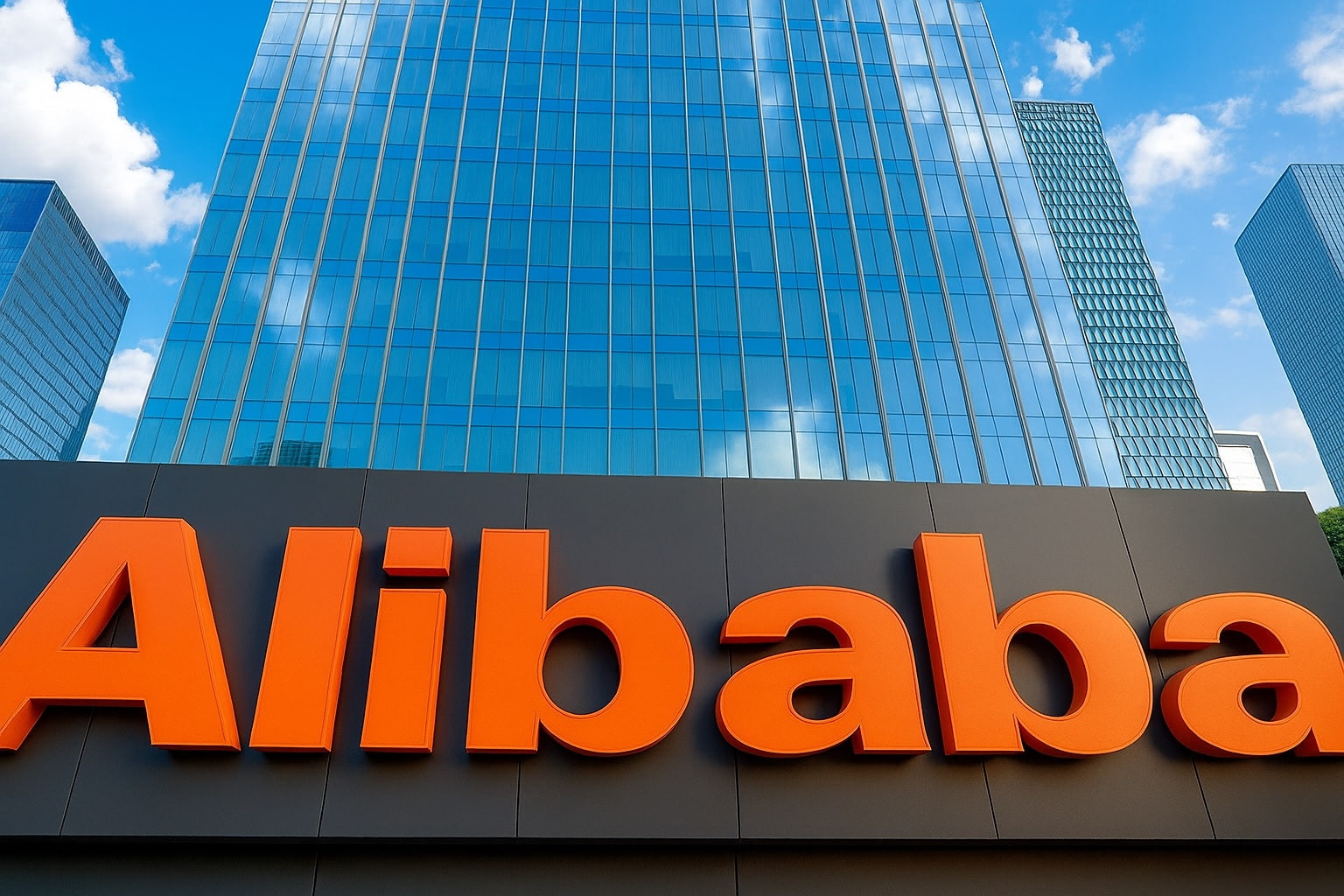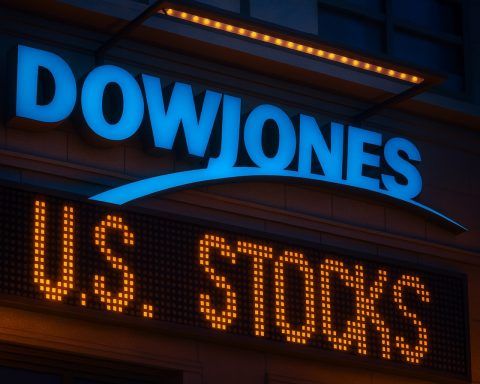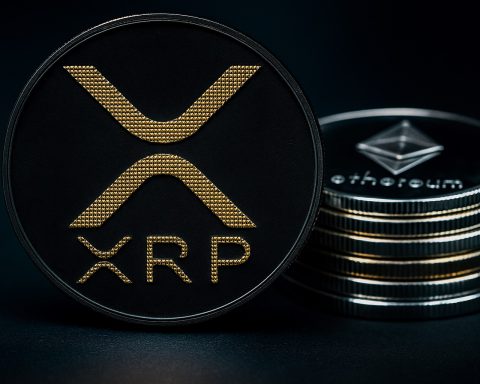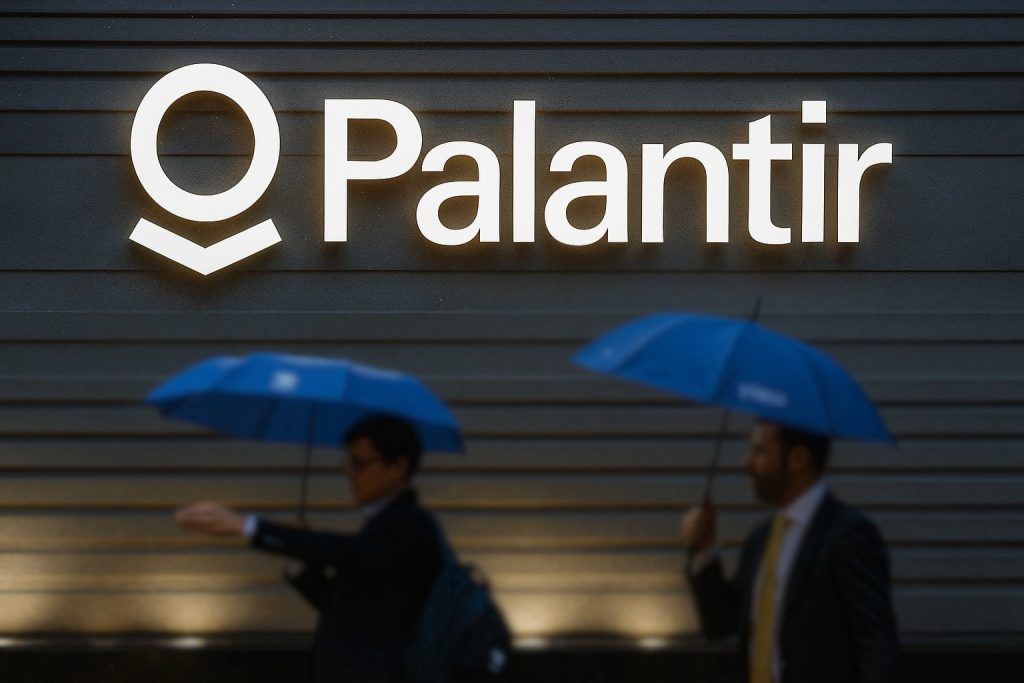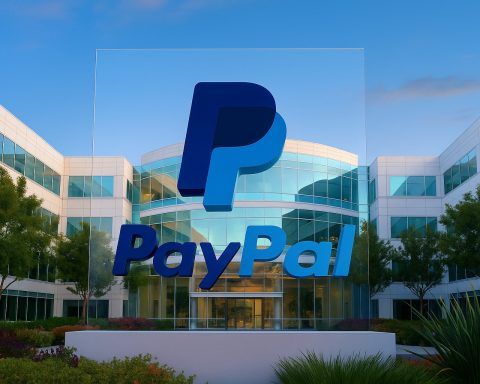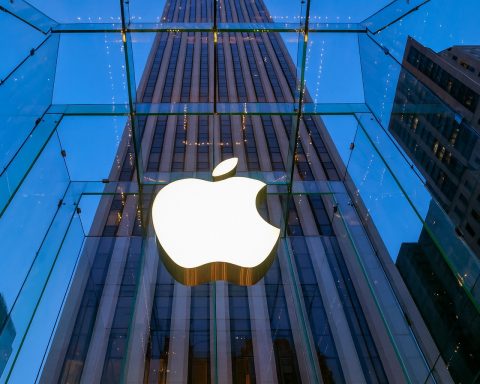Data in this article reflects prices and news available around late morning U.S. trading on November 21, 2025, and the close of the Hong Kong session. Markets move quickly; figures may have changed since publication.
1. Alibaba stock price snapshot on November 21, 2025
Hong Kong: Alibaba-W leads tech sell-off
Alibaba’s primary Hong Kong listing, Alibaba Group Holding Ltd – W (9988.HK), closed at HK$147.60, down about 4.7% on the day, on very heavy volume of roughly 141 million shares, according to exchange data and Yahoo Finance’s historical prices. [1]
Hong Kong’s broader market was also under pressure: Futu reported the Hang Seng Index down 2.38% and the Hang Seng Tech Index off 3.21%, with Alibaba-W among the notable laggards in the tech basket. [2]
AASTOCKS noted that 9988.HK “shows a triangle breakout” pattern technically, but highlighted that the stock last traded at HK$147.60, down 4.651%, with a three‑day loss of about 4.5% and a ten‑day slide of nearly 8%. [3]
Despite today’s drop, MarketScreener data show the Hong Kong line still up roughly 79% year-to-date, underscoring just how powerful Alibaba’s 2025 rebound has been. [4]
U.S. ADRs: BABA extends pre‑market weakness
In New York, Alibaba Group Holding Ltd (NYSE: BABA) was trading around $149–$150 by late morning Eastern time. Twelve Data’s real‑time feed showed BABA at $149.39 at 10:59 a.m. ET, versus a prior close of $153.28—a drop of about $3.89, or roughly 2.5%, extending Thursday’s slide. [5]
- Intraday range (so far): about $148.65 to $152.55
- Thursday’s close: $153.28
- Day change vs. Thursday close: roughly –2.5%
Benzinga reported that in pre‑market trading BABA was already down about 1.8% around $150.50 as of roughly 7:24 a.m. ET, before weakening further after the opening bell. [6]
Options activity and volatility are elevated. TipRanks (via TheFly) flagged “mixed options sentiment” with BABA recently down about 1.5% near $156.50 at the time of that note, options volume around 115,000 contracts, a put/call ratio near 0.51, and 30‑day implied volatility near 49, with the market pricing roughly a 50% probability of a move greater than ~6% on earnings. [7]
A separate Longbridge options recap showed that on November 20 Alibaba options volume reached about 235,000 contracts, with puts slightly outnumbering calls and unusually heavy interest in the $175 strike put expiring November 21, 2025, a sign of active hedging and short‑term speculation. [8]
2. Jack Ma’s re‑emergence and the new AI narrative
One of today’s most talked‑about headlines for Alibaba is about Jack Ma stepping back into the AI spotlight.
Benzinga reports that Ma made a low‑key visit to Ant Group’s campus in Hangzhou earlier this week as the fintech rolled out LingGuang, a new multimodal AI assistant that can quickly generate simple applications—from calorie trackers to games—based on natural‑language prompts. [9]
Key points from the Benzinga piece: [10]
- Ma toured Ant’s campus with the chairman and CEO during the LingGuang launch, signaling a more hands‑on role in AI strategy.
- Ant’s new assistant is part of a broader push to embed AI deeper into financial and consumer applications.
- The article notes that Alibaba stock is up about 81% year-to-date, supported mainly by cloud and AI momentum.
At the same time, Alibaba Cloud is pushing hard into consumer AI:
- On November 18, Reuters reported that Alibaba launched a major upgrade to its Qwen AI chatbot, rolling out a new Qwen app for consumers in China. The app is based on Alibaba’s most advanced Qwen large language model and can draft research reports and generate full slide decks from a single prompt. [11]
- The Qwen app, currently in public beta in China, marks a strategic shift from focusing mainly on enterprise AI to competing directly in the mass‑market chatbot space, going up against ByteDance’s Doubao, DeepSeek and Tencent’s offerings. [12]
Earlier in the year, Alibaba framed AI as a core strategic pillar alongside e‑commerce. At its September Apsara Conference, Reuters reported that the company: [13]
- Announced a partnership with Nvidia to support advanced AI workloads.
- Unveiled Qwen3‑Max, a flagship AI model with more than 1 trillion parameters.
- Outlined plans for new data centers across multiple regions including Brazil, France, the Netherlands, Mexico, Japan, South Korea, Malaysia and Dubai.
- Highlighted an earlier commitment to invest 380 billion yuan (about $53 billion) into AI‑related infrastructure over three years.
Today’s price weakness therefore isn’t about AI momentum fading—if anything, the news flow reinforces how central AI has become to Alibaba’s story. Instead, the pressure reflects earnings expectations, regulatory risk and a hot‑running share price that had nearly doubled year‑to‑date before the recent pullback. [14]
3. Earnings preview: big revenue, much smaller profit
Alibaba is scheduled to report Q2 FY2026 results (for the quarter ended September 30, 2025) on Tuesday, November 25, before the U.S. market opens, according to Nasdaq’s earnings calendar and multiple analyst notes. [15]
Analysts and data providers are converging around a clear theme: revenue roughly flat to slightly up, profits sharply down.
AASTOCKS’ aggregate “Foresight” piece, based on forecasts from major brokers, lays out the consensus for the Hong Kong line BABA‑W but effectively covers the group as a whole: [16]
- Non‑GAAP net profit (2Q FY26):
- Forecast range: RMB 8.24 billion – RMB 11.2 billion
- Versus RMB 36.52 billion a year ago
- Implied YoY decline of roughly 69%–77% (median estimate –77.4%)
- Revenue (2Q FY26):
- Forecast range: RMB 236.2 billion – RMB 247.7 billion
- Versus RMB 236.5 billion last year
- Implied change of roughly –0.1% to +4.7%, with a median +2.5%
- Adjusted EBITA:
- Forecast range: RMB 5.9 billion – RMB 8.2 billion
- Versus RMB 40.56 billion a year ago
- Implied ~80%–85% EBITA compression
The report attributes the collapse in profitability primarily to: [17]
- Fierce competition in food delivery and “quick commerce”, where Alibaba is spending heavily to defend share.
- Steep investments in AI infrastructure and model development.
Zacks’ preview, also out this morning, similarly notes that Q2 FY26 revenue is expected to grow a little over 2% year over year, and highlights that BABA shares are up around 80% year-to-date heading into the print. [18]
CMC Markets’ recent piece comparing BABA with Baidu and PDD adds that analysts are looking for EPS around RMB 5.78 on revenue of roughly RMB 243.2 billion, essentially in line with the mid‑range of the AASTOCKS forecast. [19]
Taken together, the numbers suggest:
- Top‑line growth is modest but positive, helped by AI‑driven cloud revenues and stabilizing domestic consumption.
- Profitability is under intense pressure from price wars (especially in grocery and food delivery) and AI capex, raising questions about the near‑term payoff from Alibaba’s aggressive reinvestment strategy.
This backdrop helps explain why:
- The stock has re‑rated sharply higher this year on AI optimism. [20]
- Yet options markets are now pricing a big move on earnings, and today’s selling indicates some investors are choosing to de‑risk first and ask questions later. [21]
4. Analyst calls: target hikes and new coverage
Despite the volatility, sell‑side sentiment remains broadly constructive.
Mizuho: Target raised to $195
TipRanks reports that Mizuho’s top‑rated analyst Wei Fang recently lifted his BABA price target from $159 to $195, maintaining an Outperform rating. He cites: [22]
- Improving trends in core commerce,
- Steady progress in cloud, and
- Better execution across the business.
With BABA trading around $150, that target implies roughly 25%–30% upside if the company hits his thesis.
Haitong International: HK$200 target on BABA‑W
On the Hong Kong side, Futu highlights a new initiation from Haitong International, which has started coverage of BABA‑W (9988.HK) with an “Outperform” rating and a HK$200 price target. The broker values Alibaba at about 28x and 20x non‑GAAP forward P/E for FY26 and FY27, respectively, and argues that the company is entering an AI‑led recovery phase that should reaccelerate revenue. [23]
Broader broker consensus
AASTOCKS also compiles ratings from 15 major brokers—including JPMorgan, Macquarie, Jefferies, Citi, UBS and others—showing predominantly Buy/Overweight/Outperform recommendations with target prices mostly in the HK$210–HK$235 range for BABA‑W. [24]
In the U.S., MarketBeat’s profile of BABA notes: [25]
- A “Moderate Buy” consensus rating from Wall Street,
- An average price target of about $190, and
- A recent market cap around $366 billion, with a trailing P/E near 18x and a low beta (~0.19), reflecting reduced but not eliminated perceived risk.
MarketBeat also points out that a U.S. Representative, Gilbert Ray Cisneros Jr. (D‑CA), disclosed buying between $15,001 and $50,000 of Alibaba stock in mid‑October, a small but symbolically supportive data point for U.S. investor interest. [26]
5. Regulatory and geopolitical overhang
Today’s trading cannot be understood without the political and legal clouds hanging over Alibaba.
A BusinessWire release from The Law Offices of Frank R. Cruz confirms the firm is continuing an investigation into Alibaba on behalf of investors, focusing on potential violations of U.S. securities laws. [27]
The investigation centers on a Financial Times report that cited a White House memo alleging Alibaba: [28]
- Provides China’s People’s Liberation Army (PLA) with capabilities that Washington believes threaten U.S. security, and
- Gives Chinese authorities access to customer data such as IP addresses, Wi‑Fi information, payment records and certain AI services.
The BusinessWire note points out that Alibaba’s U.S. shares dropped about 3.8% to $153.80 on November 14 after the FT story was published. [29]
Reuters’ “Take Five” markets column today frames the upcoming November 25 earnings as a key test of China’s tech rally, noting that Alibaba is the largest component of the Hang Seng Tech Index and that its shares have almost doubled in 2025 despite the recent allegations and intense competition in AI. [30]
Alibaba has denied the allegations, but the combination of:
- A White House memo touching on national security,
- A high‑profile FT investigation, and
- A U.S. law firm probing for potential investor claims
adds a layer of headline risk that markets are now actively discounting.
6. Sentiment check: options, technicals and volatility
Between the heavy options activity and sharp swings in Hong Kong, the short‑term setup is volatile:
- TipRanks’ options data show elevated implied volatility (~49 on IV30) and a skew toward downside protection, with put‑call skew steepening as traders pay up for hedges into earnings. [31]
- Longbridge’s options recap highlights large volume in near‑dated puts, particularly at the $175 strike, suggesting some investors have been hedging or speculating on a deeper pullback as the stock rolled over from its recent highs. [32]
- AASTOCKS’ technical note about a triangle breakout pattern on 9988.HK, combined with today’s 4.65% slide and heavy turnover near HK$21 billion, underscores how crowded and momentum‑driven the trade has become on the Hong Kong line. [33]
With BABA up roughly 80–90% year‑to‑date (depending on the line and reference date), even small disappointments on earnings, guidance or regulatory clarity could trigger outsized moves as fast‑money longs take profits. [34]
7. What to watch next if you follow Alibaba stock
Heading into the November 25 report, here are the key questions today’s news flow raises for anyone tracking Alibaba stock (or the broader China tech complex):
- Can AI and cloud offset pressure in quick commerce?
Markets will be watching how fast cloud and AI revenues are growing and whether management provides clearer KPIs for Qwen adoption and AI‑related monetization, against the drag from price wars in food delivery and instant retail. [35] - How deep is the margin trough?
Consensus expects non‑GAAP net profit and EBITA to fall 70–80%+ year‑over‑year this quarter. Investors will focus on whether management characterizes this as a one‑off investment spike or a longer‑term margin reset for the business. [36] - Does management address the White House memo and legal probes head‑on?
Clarity on data‑handling practices, government clients and internal controls could matter as much as the numbers, given ongoing U.S.–China tensions and the risk of future restrictions or litigation. [37] - Is capital return still in focus?
With the stock still trading below its 52‑week high of around $193 and an average Wall Street target near $190, investors will look for updates on buybacks and potential dividends, particularly if near‑term profit is depressed by discretionary investment. [38] - Will volatility present opportunity or risk?
Options markets are pricing a big move, and recent sessions in Hong Kong show how abruptly sentiment can swing. That can be attractive for traders but uncomfortable for long‑term holders who aren’t prepared for double‑digit swings around news. [39]
8. Bottom line
On November 21, 2025, Alibaba stock sits at the intersection of three powerful forces:
- A high‑octane AI and cloud growth story, reinforced by Jack Ma’s renewed visibility and new consumer AI launches; [40]
- A profitability crunch driven by reinvestment in quick commerce and AI infrastructure; [41]
- Heightened regulatory and geopolitical scrutiny that could affect how global investors value Chinese tech generally. [42]
Today’s drop in both the Hong Kong and U.S. listings reflects investors de‑risking ahead of a pivotal earnings report, not a collapse in the AI narrative. For now, analysts largely remain bullish, but markets are clearly demanding proof that Alibaba can convert its AI lead and massive investment budget into sustainable earnings growth—without getting caught in the crossfire of geopolitics.
As always, this article is for informational purposes only and does not constitute financial or investment advice. Anyone considering exposure to Alibaba should carefully assess their own risk tolerance, time horizon and diversification, and, if needed, consult a qualified financial adviser.
References
1. www.marketscreener.com, 2. news.futunn.com, 3. www.aastocks.com, 4. www.marketscreener.com, 5. twelvedata.com, 6. www.benzinga.com, 7. www.tipranks.com, 8. longbridge.com, 9. www.benzinga.com, 10. www.benzinga.com, 11. www.reuters.com, 12. www.reuters.com, 13. www.reuters.com, 14. www.reuters.com, 15. www.nasdaq.com, 16. www.aastocks.com, 17. www.aastocks.com, 18. www.zacks.com, 19. www.cmcmarkets.com, 20. www.reuters.com, 21. www.tipranks.com, 22. www.tipranks.com, 23. news.futunn.com, 24. www.aastocks.com, 25. www.marketbeat.com, 26. www.marketbeat.com, 27. www.businesswire.com, 28. www.businesswire.com, 29. www.businesswire.com, 30. www.reuters.com, 31. www.tipranks.com, 32. longbridge.com, 33. www.aastocks.com, 34. www.zacks.com, 35. www.aastocks.com, 36. www.aastocks.com, 37. www.businesswire.com, 38. www.marketbeat.com, 39. www.tipranks.com, 40. www.benzinga.com, 41. www.aastocks.com, 42. www.businesswire.com
